
How to Use Solar Charge Controller1212: Examples, Pinouts, and Specs
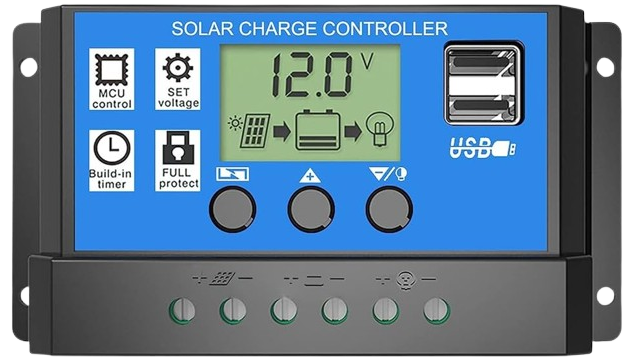
 Design with Solar Charge Controller1212 in Cirkit Designer
Design with Solar Charge Controller1212 in Cirkit DesignerIntroduction
The Solar Charge Controller1212 is a device designed to regulate the voltage and current generated by solar panels to safely charge batteries. It ensures that batteries are not overcharged, which can lead to damage, and optimizes their performance and lifespan. This component is essential in solar power systems, acting as a bridge between solar panels and batteries.
Explore Projects Built with Solar Charge Controller1212
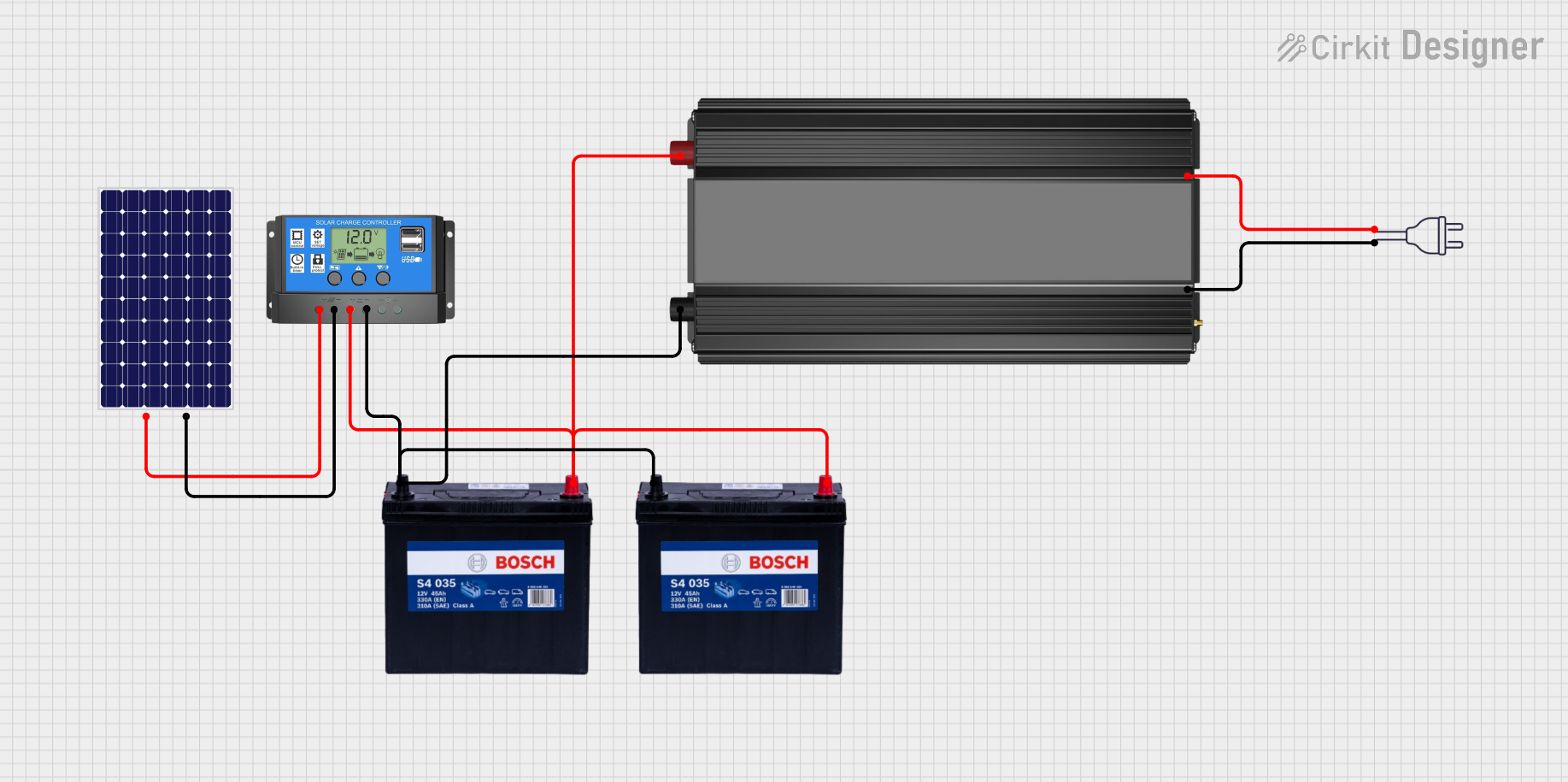
 Open Project in Cirkit Designer
Open Project in Cirkit Designer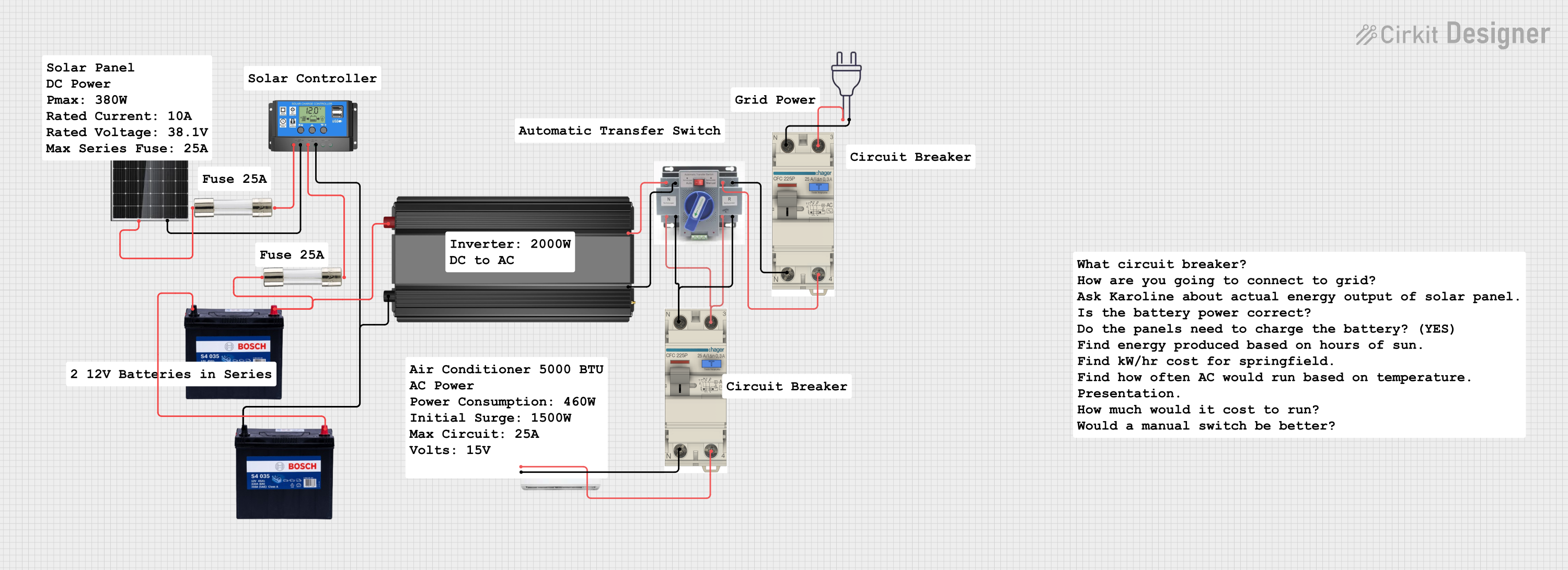
 Open Project in Cirkit Designer
Open Project in Cirkit Designer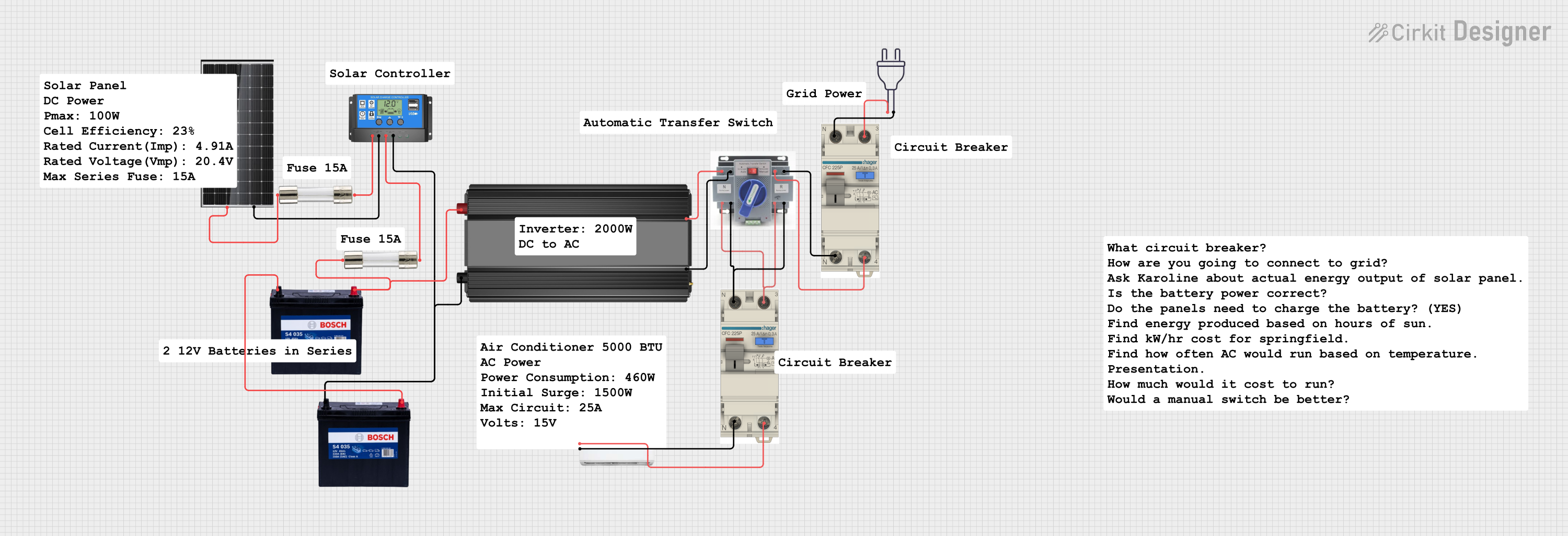
 Open Project in Cirkit Designer
Open Project in Cirkit Designer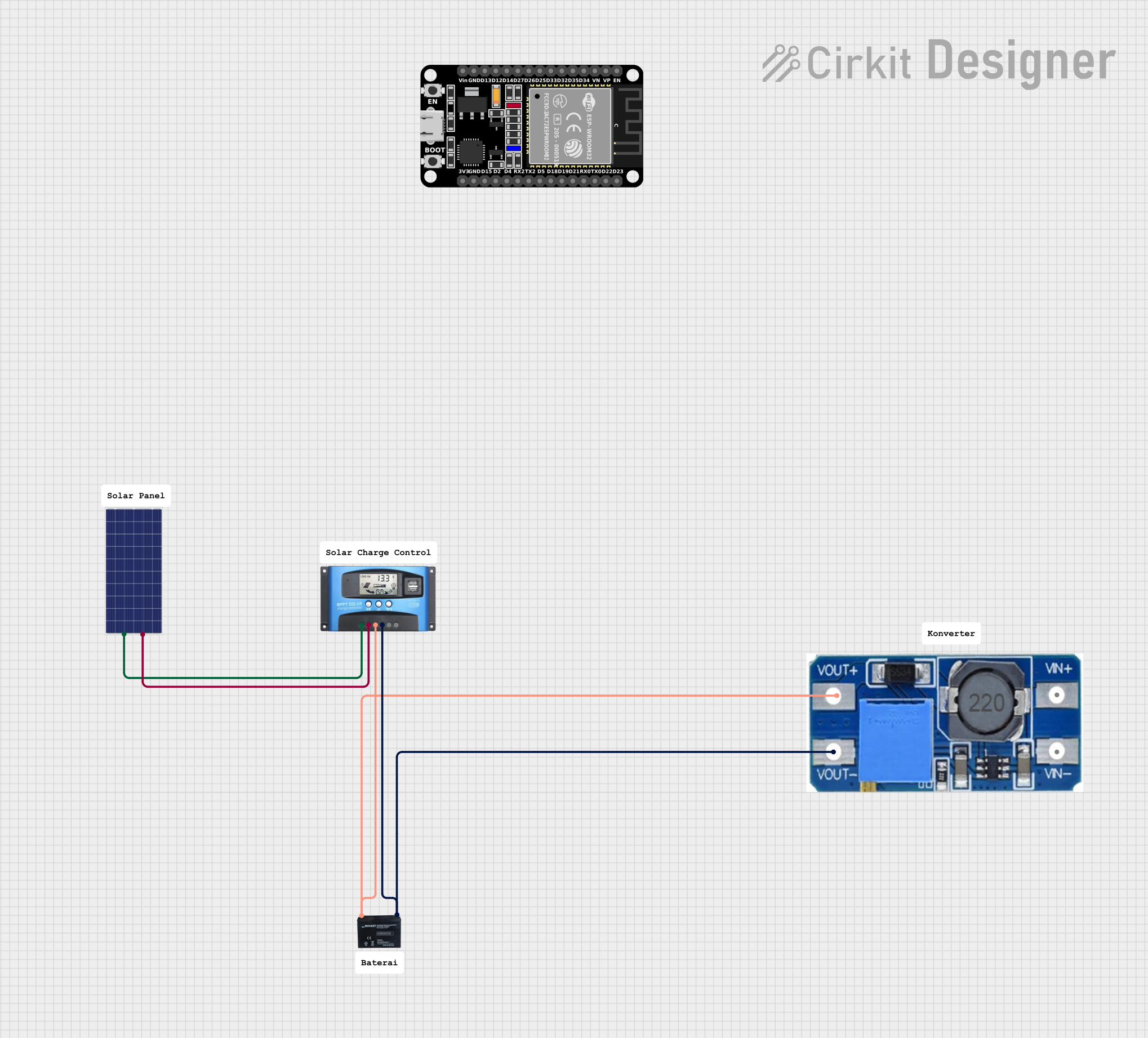
 Open Project in Cirkit Designer
Open Project in Cirkit DesignerExplore Projects Built with Solar Charge Controller1212

 Open Project in Cirkit Designer
Open Project in Cirkit Designer
 Open Project in Cirkit Designer
Open Project in Cirkit Designer
 Open Project in Cirkit Designer
Open Project in Cirkit Designer
 Open Project in Cirkit Designer
Open Project in Cirkit DesignerCommon Applications and Use Cases
- Solar-powered home energy systems
- Off-grid solar installations
- Solar-powered lighting systems
- Portable solar charging setups
- RVs, boats, and other mobile solar applications
Technical Specifications
The Solar Charge Controller1212 is designed to handle a wide range of solar panel and battery configurations. Below are its key technical details:
General Specifications
| Parameter | Value |
|---|---|
| Maximum Input Voltage | 50V DC |
| Maximum Input Current | 12A |
| Battery Voltage Range | 12V nominal |
| Charging Technology | PWM (Pulse Width Modulation) |
| Operating Temperature | -20°C to 60°C |
| Efficiency | ≥ 95% |
| Self-Consumption | < 10mA |
Pin Configuration and Descriptions
| Pin Name | Description |
|---|---|
| Solar Panel + | Positive terminal for connecting the solar panel |
| Solar Panel - | Negative terminal for connecting the solar panel |
| Battery + | Positive terminal for connecting the battery |
| Battery - | Negative terminal for connecting the battery |
| Load + | Positive terminal for connecting the load (optional, for direct power use) |
| Load - | Negative terminal for connecting the load (optional, for direct power use) |
Usage Instructions
How to Use the Solar Charge Controller1212 in a Circuit
- Connect the Solar Panel:
- Attach the positive (+) and negative (-) terminals of the solar panel to the corresponding
Solar Panel +andSolar Panel -pins on the charge controller.
- Attach the positive (+) and negative (-) terminals of the solar panel to the corresponding
- Connect the Battery:
- Connect the positive (+) and negative (-) terminals of the battery to the
Battery +andBattery -pins. - Ensure the battery voltage matches the charge controller's supported range (12V nominal).
- Connect the positive (+) and negative (-) terminals of the battery to the
- Optional Load Connection:
- If you wish to power a load directly, connect the load's positive (+) and negative (-) terminals to the
Load +andLoad -pins.
- If you wish to power a load directly, connect the load's positive (+) and negative (-) terminals to the
- Power On:
- Once all connections are secure, the charge controller will automatically regulate the charging process.
Important Considerations and Best Practices
- Battery Compatibility: Ensure the battery type (e.g., lead-acid, lithium-ion) is compatible with the charge controller.
- Solar Panel Voltage: Verify that the solar panel's open-circuit voltage does not exceed the controller's maximum input voltage (50V DC).
- Wiring: Use appropriately rated wires to handle the current without overheating.
- Ventilation: Install the charge controller in a well-ventilated area to prevent overheating.
- Polarity: Double-check all connections for correct polarity to avoid damage to the controller or connected devices.
Arduino UNO Integration Example
The Solar Charge Controller1212 can be monitored using an Arduino UNO by reading the battery voltage. Below is an example code snippet:
// Example: Reading battery voltage from Solar Charge Controller1212
// Ensure a voltage divider is used to step down the battery voltage to a safe range for the Arduino
const int batteryPin = A0; // Analog pin connected to the voltage divider
float voltageDividerRatio = 5.0; // Adjust based on your resistor values
void setup() {
Serial.begin(9600); // Initialize serial communication
pinMode(batteryPin, INPUT); // Set the battery pin as input
}
void loop() {
int rawValue = analogRead(batteryPin); // Read the analog value
float batteryVoltage = (rawValue * 5.0 / 1023.0) * voltageDividerRatio;
// Print the battery voltage to the Serial Monitor
Serial.print("Battery Voltage: ");
Serial.print(batteryVoltage);
Serial.println(" V");
delay(1000); // Wait for 1 second before the next reading
}
Note: Use a voltage divider circuit to step down the battery voltage to a safe range (0-5V) for the Arduino's analog input pins.
Troubleshooting and FAQs
Common Issues and Solutions
No Output from the Controller
- Cause: Incorrect wiring or loose connections.
- Solution: Double-check all connections and ensure proper polarity.
Battery Not Charging
- Cause: Solar panel voltage is too low or insufficient sunlight.
- Solution: Verify the solar panel's output voltage and ensure it is within the controller's input range. Place the panel in direct sunlight.
Overheating
- Cause: Poor ventilation or excessive current draw.
- Solution: Install the controller in a well-ventilated area and ensure the load does not exceed the controller's maximum current rating.
Load Not Powering On
- Cause: Load current exceeds the controller's capacity or incorrect wiring.
- Solution: Check the load's current requirements and verify the wiring.
FAQs
Q: Can I use a 24V battery with this controller?
A: No, the Solar Charge Controller1212 is designed for 12V nominal batteries only.Q: Does the controller support MPPT technology?
A: No, this model uses PWM (Pulse Width Modulation) for charging.Q: Can I connect multiple solar panels?
A: Yes, but ensure the combined voltage and current do not exceed the controller's input limits.Q: How do I know if the battery is fully charged?
A: The controller typically has an LED indicator or display to show the charging status. Refer to the specific model's user manual for details.
By following this documentation, you can effectively integrate and troubleshoot the Solar Charge Controller1212 in your solar power system.